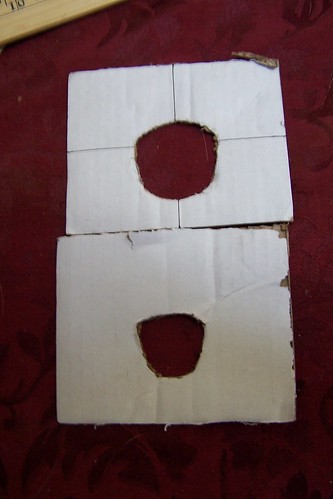Because the Bow Construction FAQ suggested that I add a bit of extra length to the bow when using a somewhat inferior wood like the oak we've got, and because its always easier to take more off than put any back, I've got a bow thats about 78" long. So I had to do a little extrapolation on the tables in the tillering article to get out to 78" - his longest is 72". For 72" and a 40 lb. draw he uses .36, so I extrapolate from the table to .35 for 78" and a 40 lb. draw. To get to a draw of 45 lbs. - my target - you multiply by 40/45, and using a standard weight of a gallon jug full of water (@8.34 lbs.) I get:
0.35 x 40/45 x 8.34 = 2.59 inches.
Great! Except rulers with hundreths of inches on them are hard to come by in my world, so I'll convert to cm: 6.58 cm. And the deflection for the outer half of each limb is supposed to be between 1/4 and 1/3 of the deflection for the full limb, so between 1.65 and 2.19 cm. I've carried out to an extra decimal place while doing the maths, but I'll be lucky to be able to measure accurately to the nearest millimeter, so we'll call it:
Full Limb: 66mm.
Half Limb: 17 - 22mm.
So I bought some sawhorses, and came up with the following rig for taking the measurements:
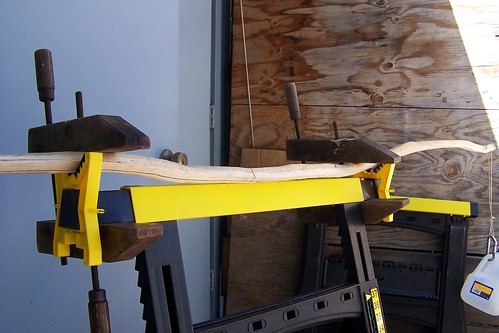
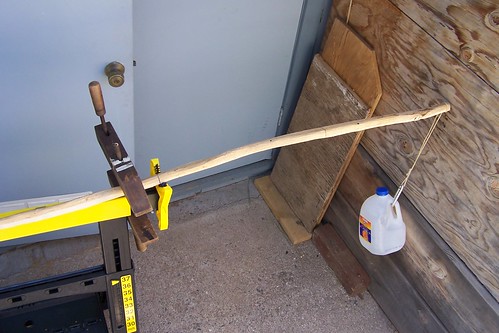
The bow is held fast on the horse by 2 clamps, with the center of the bow or the midpoint line of the limb exactly on the edge of the horse. Its pushed up to the fence until the end just touches, and I make a mark. Then I add a gallon jug of water to the string and measure the deflection:
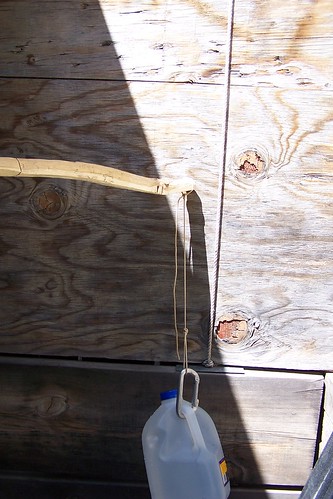
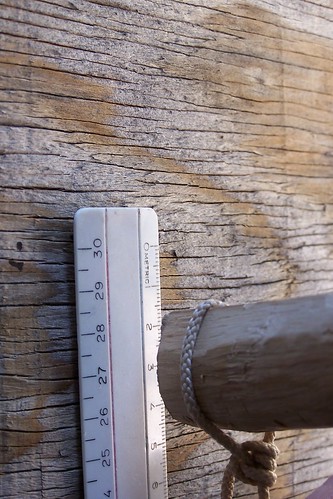
We did the outer half of the limb first, and when it was within the target range then we shifted to the halfway mark and measured for the whole limb - taking wood relatively evenly off the belly and sides of the bow, wanting to keep the back as a single ring of wood (as much as we'd managed so far...) We got one limb done, and then it was getting late and my hands were getting sore, so we'll leave the other side for another day.

